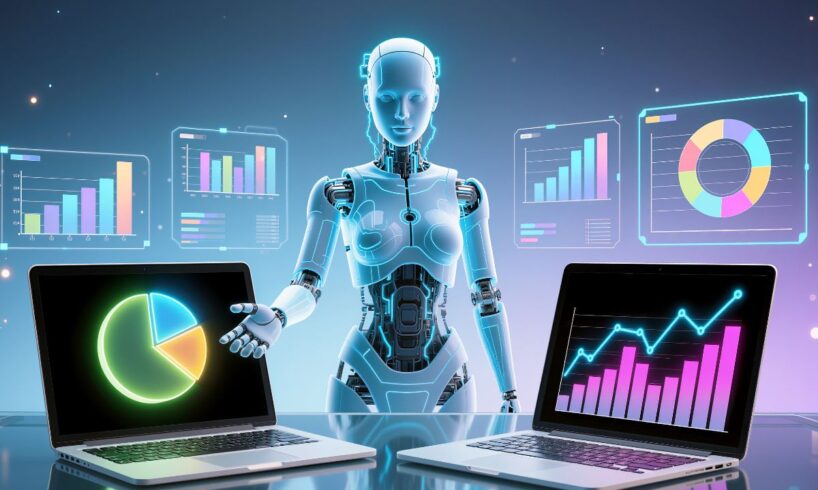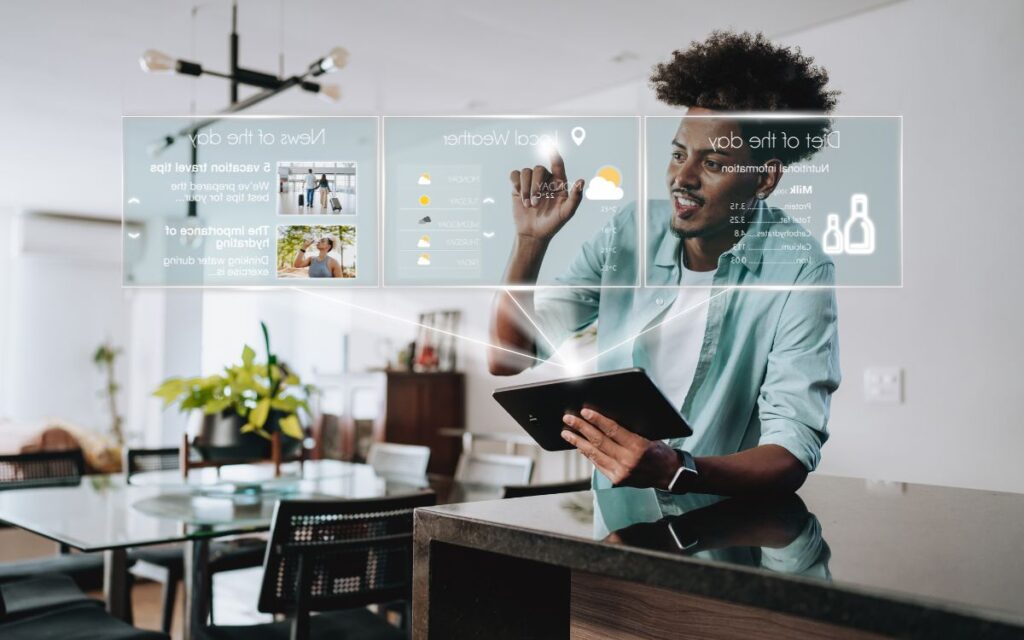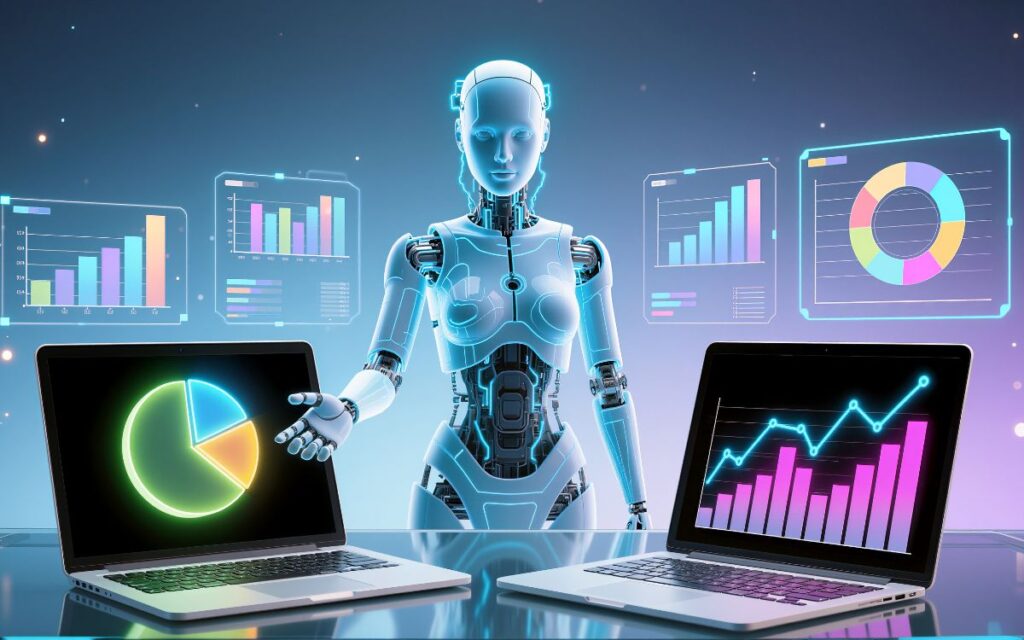
Artificial intelligence is no longer a distant sci-fi concept. In 2025, AI in everyday life in the U.S. 2025 is weaving into our daily routines, from home assistants and health apps to work tools and shopping picks. Understanding how artificial intelligence is embedded into day-to-day activities helps Americans stay ahead of change and make the most of these technologies.
Why AI in Everyday Life in the U.S. 2025 Matters More Than Ever
Today, the adoption of artificial intelligence in everyday life in the U.S. has reached a tipping point. According to a consumer report, more than 60% of American adults used AI in the past six months and nearly one in five rely on it every day. Menlo Ventures+1

Meanwhile, a survey found that 52% of U.S. adults now use large-language model tools like chatbots and generative AI. Elon University
These numbers show that AI in everyday life in the U.S. 2025 is no longer optional, it’s becoming essential.
Top 5 Ways Artificial Intelligence Is Present in Daily U.S. Life

Smart Homes & Voice Assistants
From voice-activated assistants to smart thermostats, artificial intelligence is simplifying home management. These tools learn our preferences, predict our routines, and automate tasks—making daily life smoother.
Health & Wellness Apps Using AI
Whether it’s tracking workouts, managing sleep, or even offering health advice, AI in everyday life in the U.S. 2025 shows up via apps and wearables. For example, more than one-third of Americans now use AI tools to help with health or wellness tasks like meal planning and exercise routine suggestions. New York Post
Work Tools & Productivity Boosters
At work, artificial intelligence is embedded in collaboration platforms, automated summaries, smart scheduling, and more. Businesses are turning to generative AI and traditional machine learning to support employees and streamline operations. MIT Sloan
Thus, AI in everyday life in the U.S. 2025 is not just personal, it’s professional too.
Shopping & Consumer-Experience Enhancements
Retailers use AI to tailor recommendations, optimize logistics, deliver personalized ads, and improve customer support bots. When you get a product suggestion online that feels just right—it’s likely driven by artificial intelligence.
Travel, Navigation & Smart Cities
From ride-sharing apps that match you with drivers to navigation systems that optimize routes in real time, AI in everyday life in the U.S. 2025 extends into how we move around and how cities plan for us.
What Americans Think About Artificial Intelligence in Everyday Life
While usage is high, there’s a long way to go in acceptance and understanding. About 55% of U.S. adults say they would like more control over how artificial intelligence is used in their lives. Pew Research Center

Interestingly, many don’t feel they have much control. Only 14% believe they have “a great deal or quite a bit” of control over how AI impacts them. norc.org
This gap, between adoption and comfort, makes discussing AI in everyday life in the U.S. 2025 more important than ever.
Challenges & Risks of Having AI in Everyday Life in the U.S. 2025
- Privacy & Data Security: As devices learn more about us, concerns rise on how much data is collected and who uses it.
- Bias & Fairness: Artificial intelligence systems can inherit human biases or misinterpret context—making oversight crucial. MIT Sloan
- Dependence & Skill Erosion: As one survey found, some users of large language models felt they were becoming too reliant on them. Elon University
- Regulation & Ethics: With AI growing fast, many Americans believe regulation should increase. Pew Research Center
How Individuals & Businesses Can Benefit from AI in Everyday Life in the U.S. 2025

For Individuals
- Embrace AI-powered apps to streamline your day (e.g., automatic meal planning, time-saving shortcuts).
- Stay informed, understand what AI tools you use, how they use your data, and how they can be configured for your benefit.
- Balance: Use AI to complement your skills, not replace your thinking or decision-making.
For Businesses
- Leverage artificial intelligence in everyday life in the U.S. 2025 by integrating AI tools into customer-service, marketing, operations, and remote work.
- Focus on training: Employees need to understand not just how to use AI tools, but when they’re appropriate.
- Be transparent: Communicate with users about when they’re interacting with AI, how data is processed, and how privacy is protected.
The Future of Artificial Intelligence in Everyday Life in the U.S. 2025 and Beyond
Looking ahead, the integration of AI will deepen. According to the 2025 AI Index Report, artificial intelligence will continue to expand across hardware, inference infrastructure, and everyday apps. hai.stanford.edu

For U.S. consumers and professionals, this means:
- More personalized digital experiences.
- Smarter home and work environments.
- Greater role for generative AI in creativity, content, and decision-support.
As a result, AI in everyday life in the U.S. 2025 represents a shift from novelty to necessity.
Frequently Asked Questions (FAQ)
Q1: What does “AI in everyday life in the U.S. 2025” really mean?
It refers to the wide range of artificial intelligence technologies, from home assistants and health apps to productivity tools and smart services, that Americans use as part of their daily routines in 2025.
Q2: How many Americans use AI regularly?
Surveys show that more than half of U.S. adults used AI in the past six months, and about one in five use it daily. Menlo Ventures+1
Q3: Is artificial intelligence safe to use in everyday life?
Like any technology, AI has risks, privacy, bias, dependence. However, with proper settings, transparency, and awareness, AI can be used safely and beneficially. The key is informed use.
Q4: Will AI replace humans in everyday tasks in the U.S.?
AI won’t replace humans entirely, but it will augment many tasks. The aim is to let artificial intelligence handle routine work so humans can focus on higher-value activities.
Q5: How should I prepare for more AI in my daily life/work?
Stay curious. Learn about the tools you use, explore how AI can help you, and keep your skills sharp so you can work with AI, not just rely on it.
Also read: Remote Work Trends in the U.S. 2025: How Americans Are Redefining Work and Productivity
